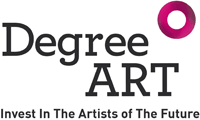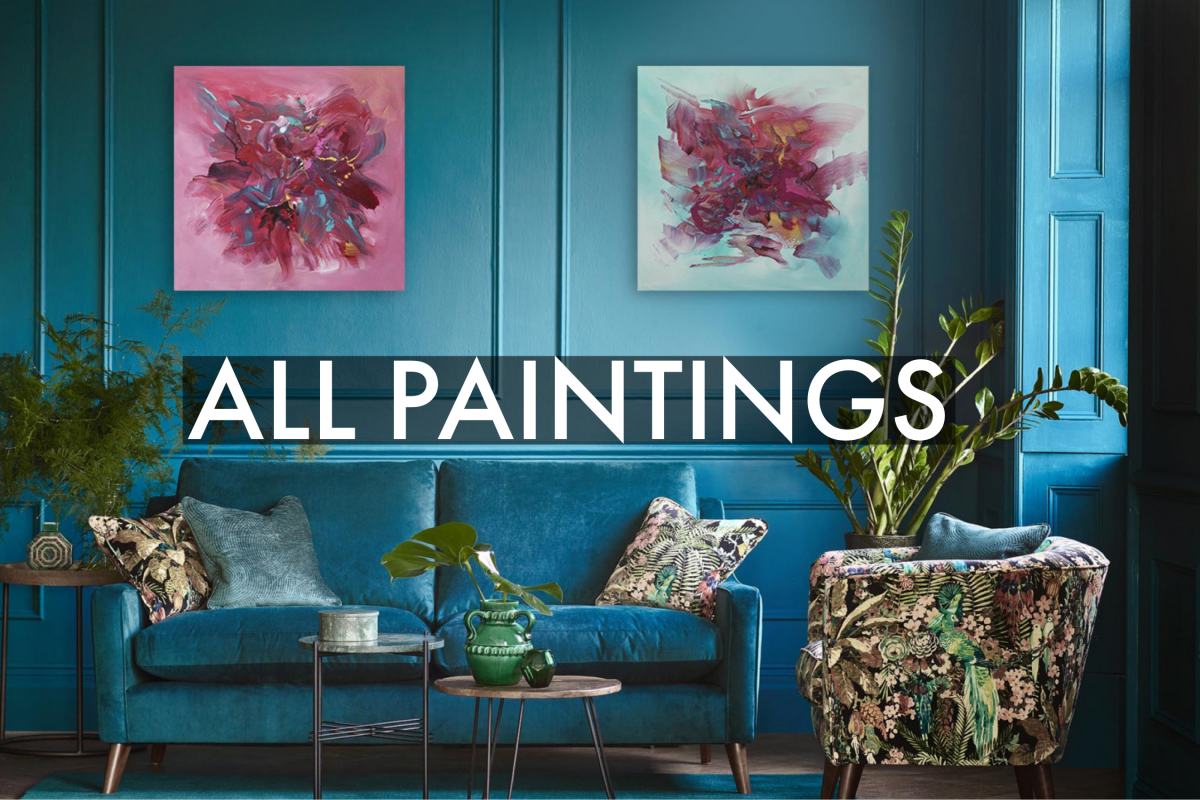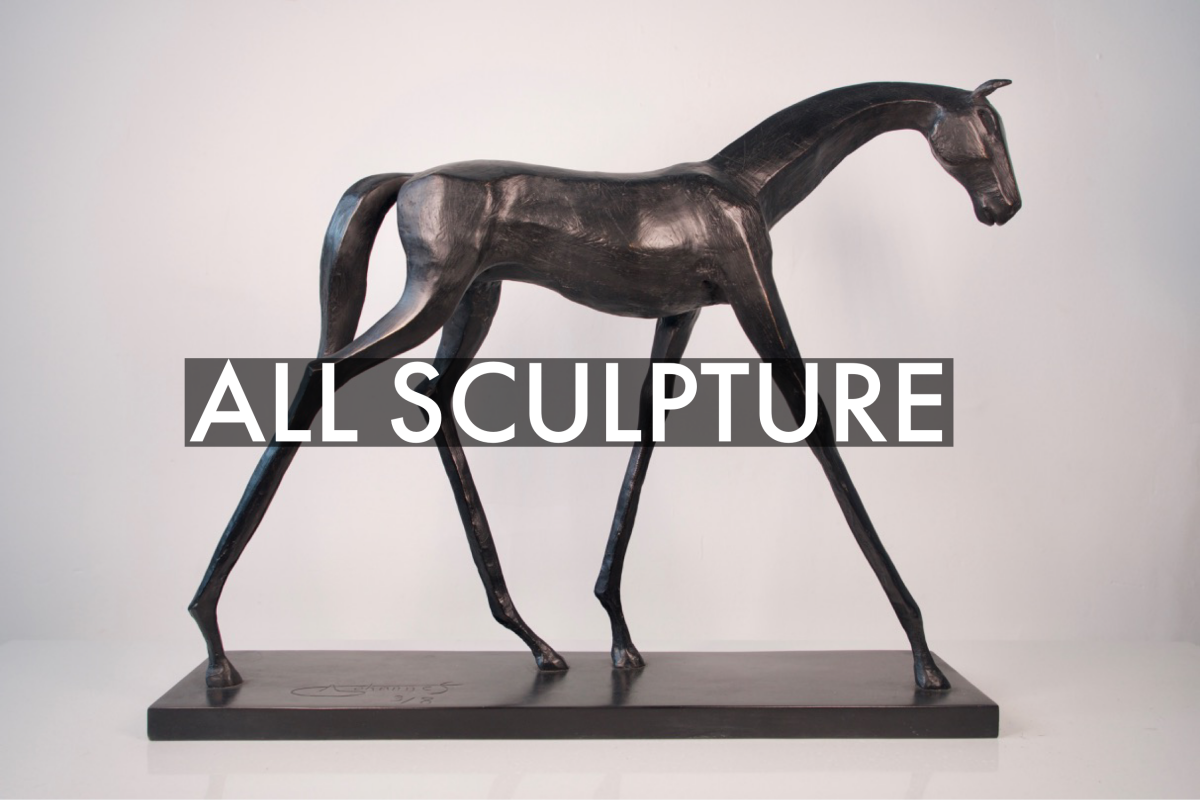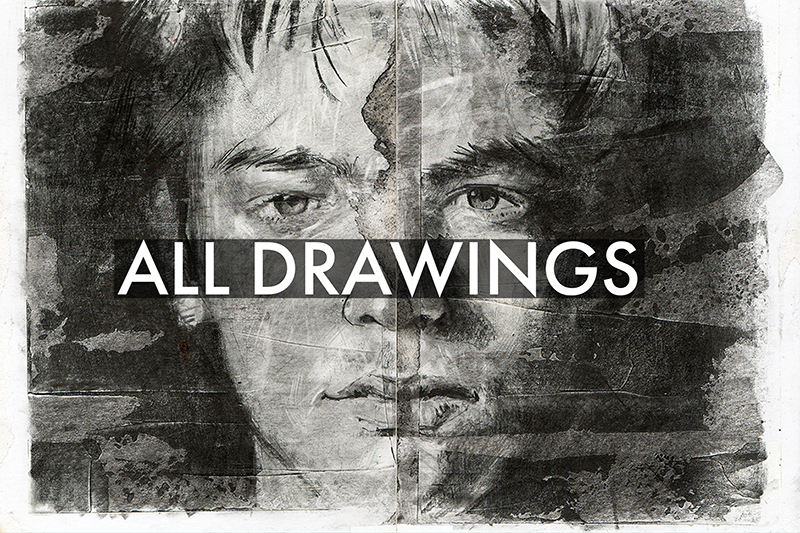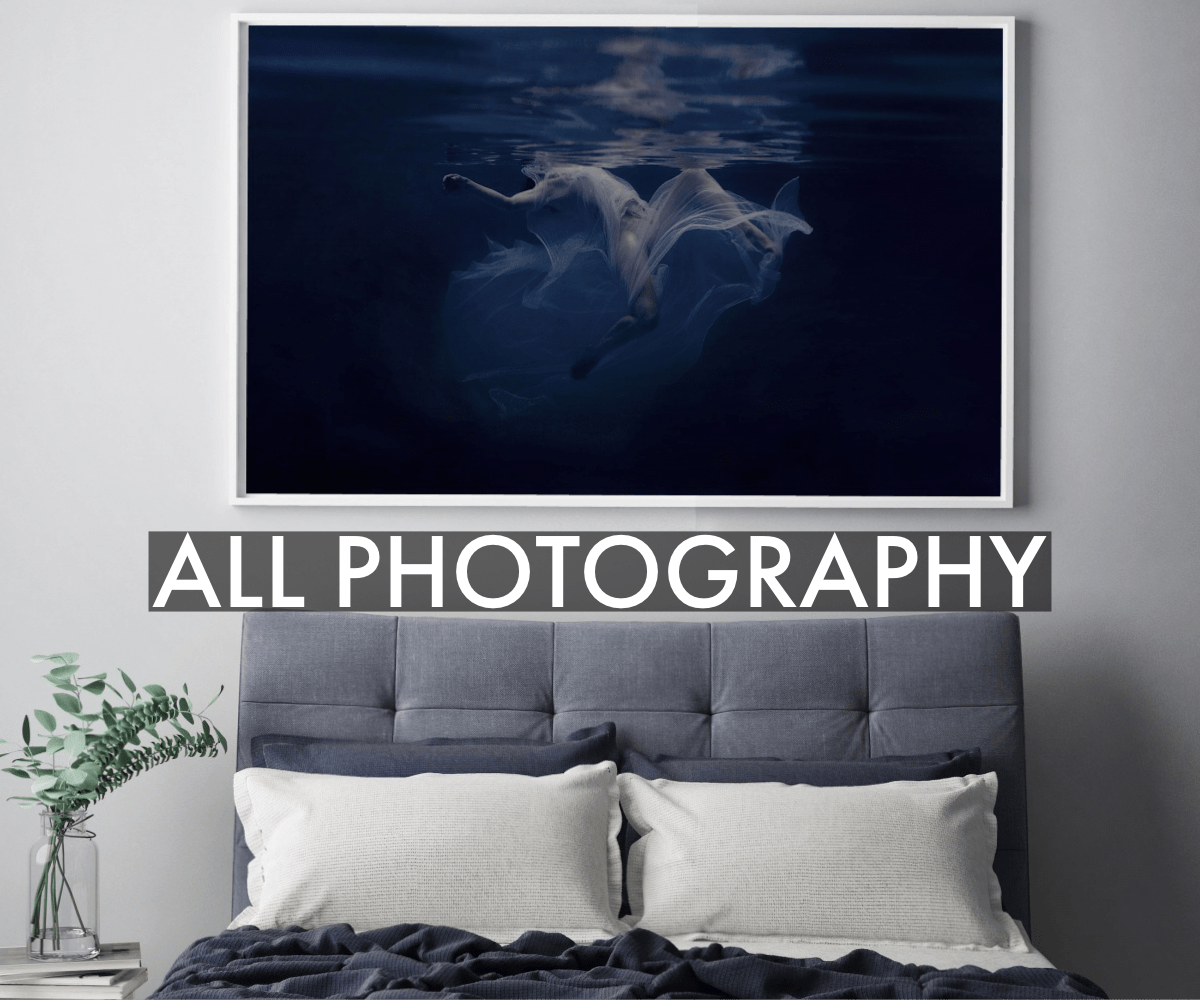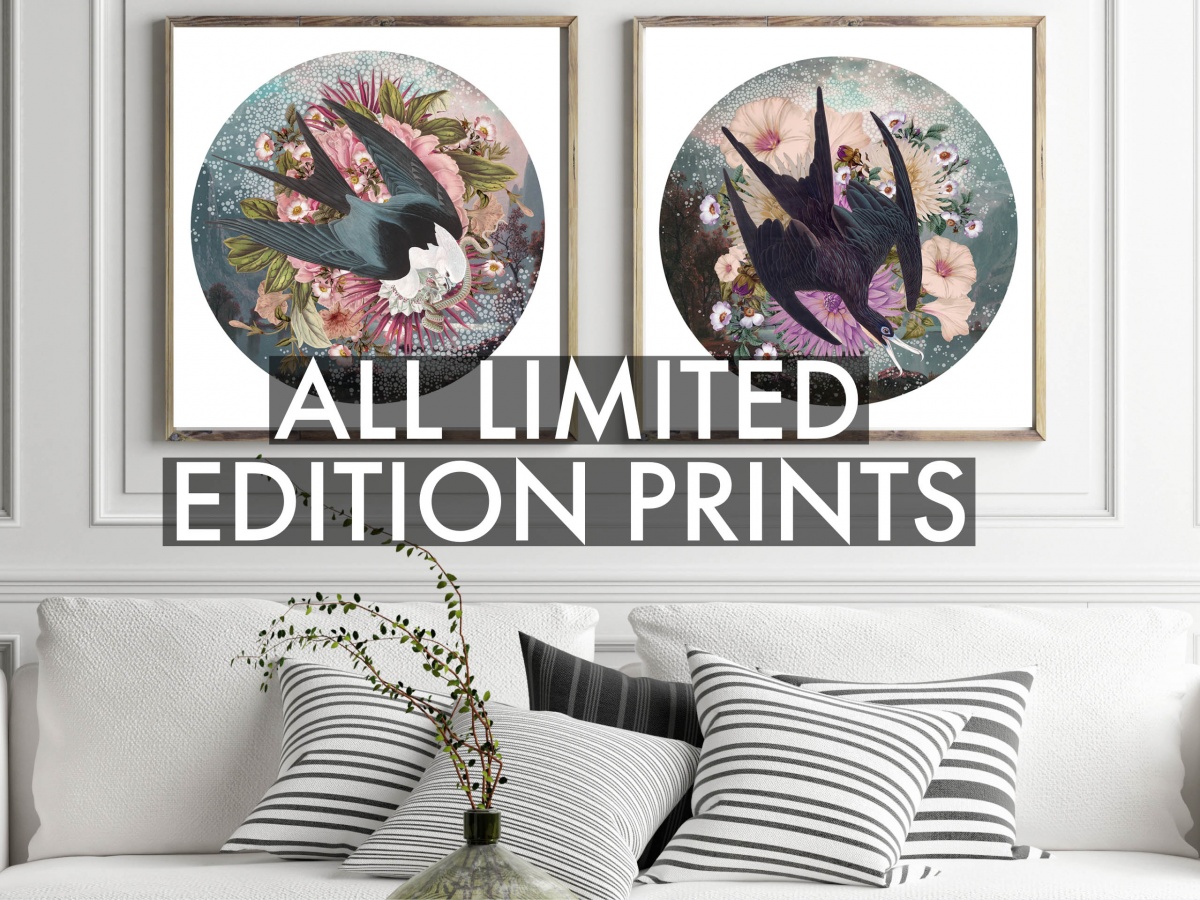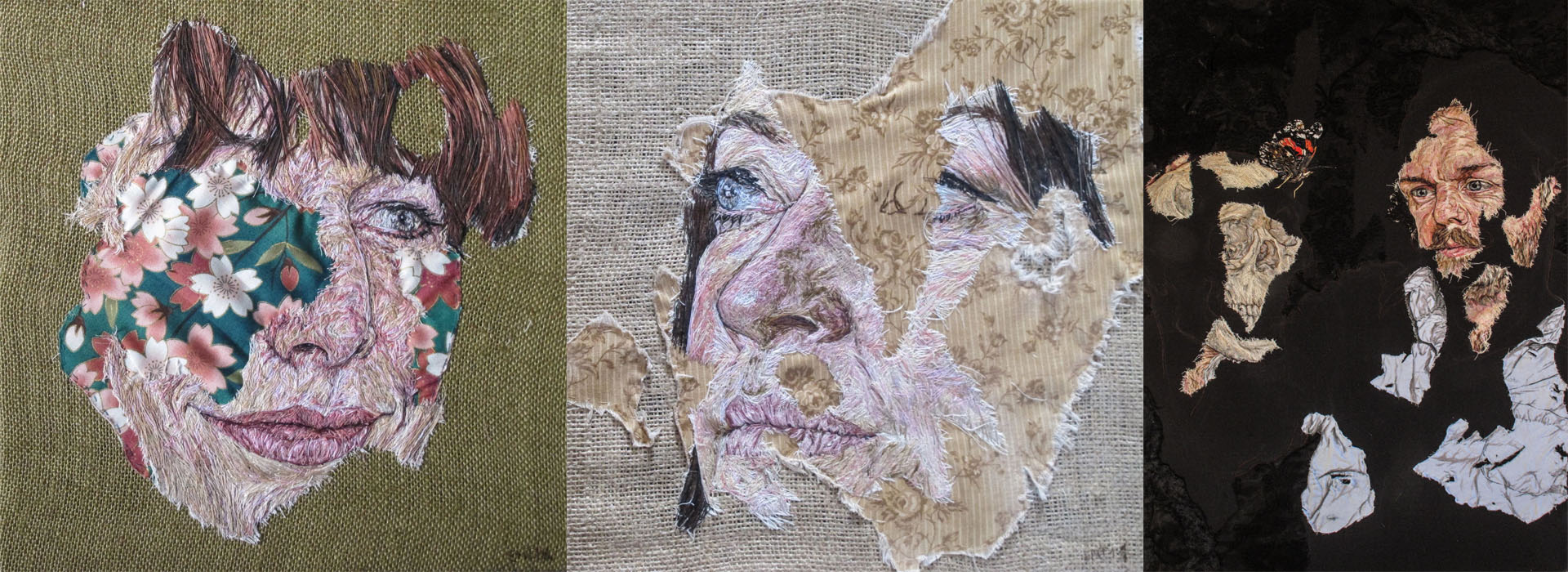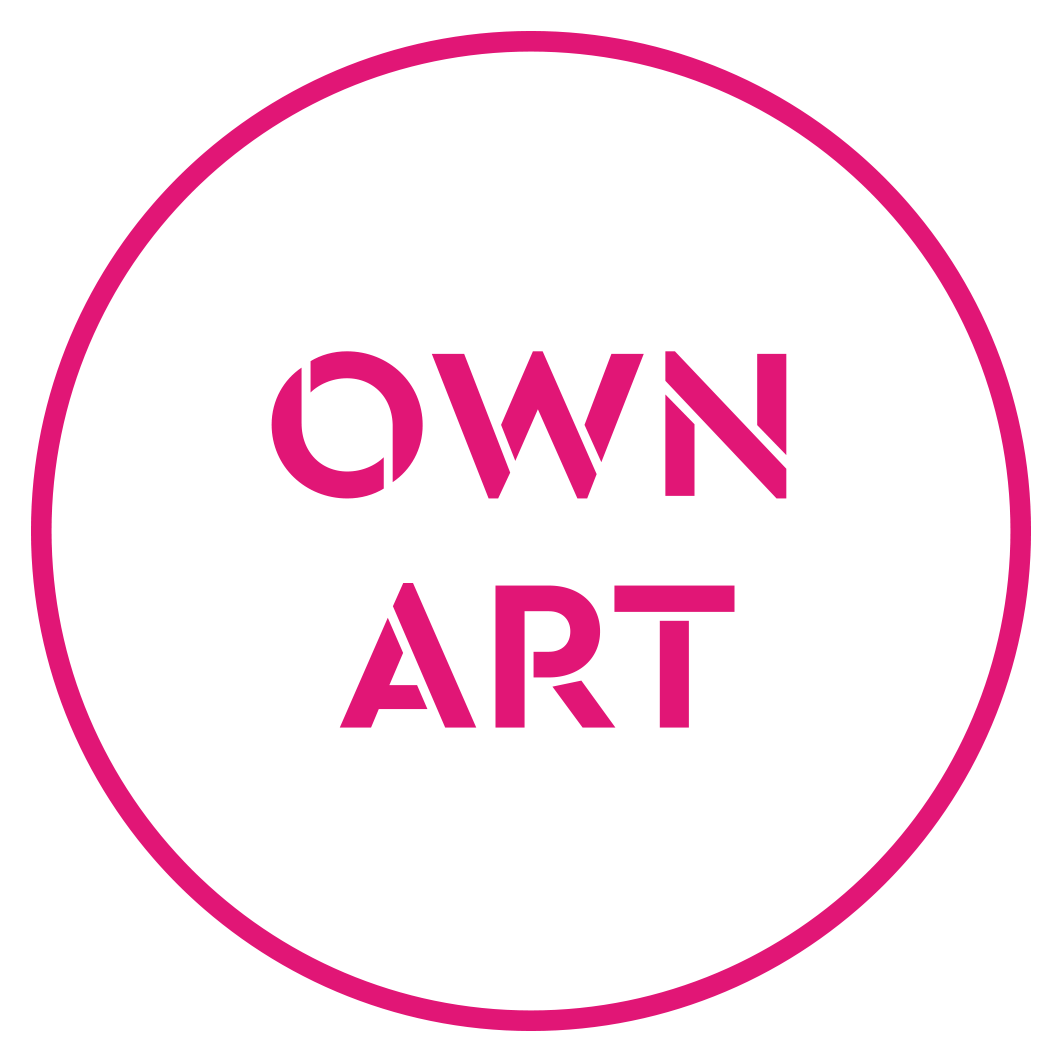Based in Kent, Emily Tull has been exhibiting in solo and group shows since 1998, predominantly across Kent but also in London, Manchester and Birmingham. Recently exhibiting in the Royal Academy's Summer Exhibition (2014), the Mall Galleries, the Ruth Borchard Self-Portrait Prize and was also a contestant in the Sky Arts Portrait Artist of the Year series 2014.
1) Which art movement do you consider most influential on your practice?
So hard to pick one, but the Pre-Raphaelites - I always go back to their style and themes.
2) Where do you go and when to make your best art?
Once I have an idea, I like to work long hours over only a few days (depending on size) to complete an artwork. My mind is focused on that subject and I want to complete as soon as possible. I often play music that may have inspired the piece or gives the right mood.
3) How do you describe your 'creative process'?
I called my style of work Thread Painting. Everything is hand stitched, which is a long process, but unlike traditional embroidery it is random, unplanned stitching, the artwork is created in an organic manner.
4) Which artist, living or deceased, is the greatest inspiration to you?
Francis Bacon
5) If you weren't an artist, what would you do?
When I was a child I always wanted to be an artist, my backup plan was to be a binman, I think that is still true today.
6) What do you listen to for inspiration?
All different types of music, many lyrics have inspired titles of my artworks or given me the imagery.
7) If you could own one artwork, and money was no object, which piece would you acquire?
The Lady Of Shallot by John William Waterhouse
8) If your dream museum or collection owner came calling, which would it be?
V&A
9) What is your key piece of advice for artists embarking on a fine art or creative degree today?
Follow your heart, and don't get bogged down by too many opinions
10) What is your favourite book of all time (fiction or non-fiction)?
Silly Verse For Kids, Spike Milligan
11) If you could hang or place your artwork in one non-traditional art setting, where would that be?
In a building that was stuck in a bygone time, with wallpaper falling off walls.
12) What was the biggest lesson your university course or time studying taught you?
Sketchbooks. Also to trust your own mind.
13) And finally, if we were to fast forward 10 years, where would we find you?
Living in a place with my own studio attached where I would be running workshops from.
